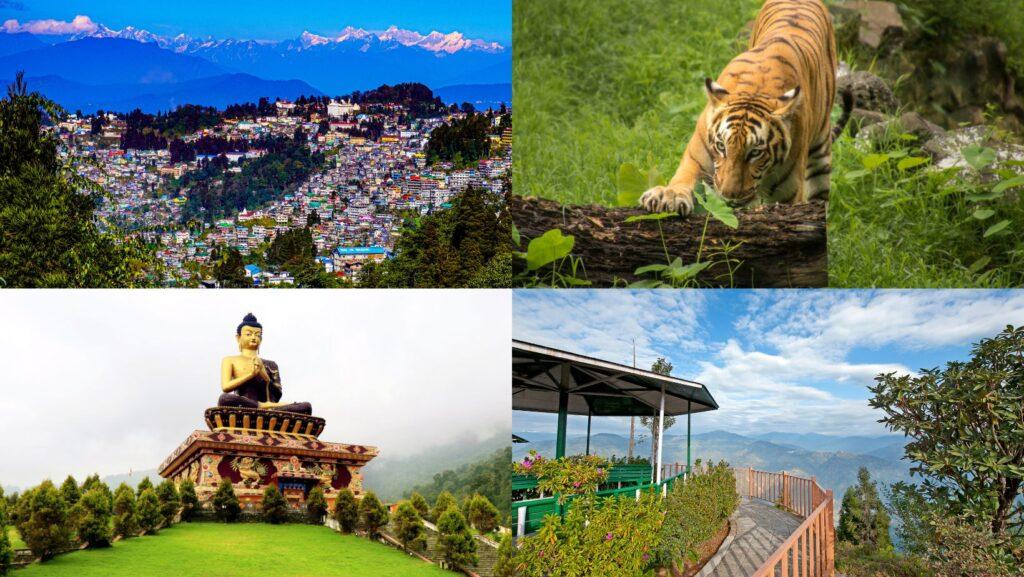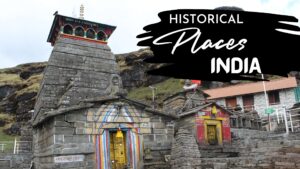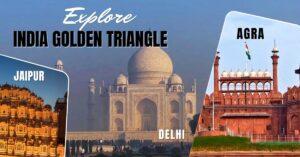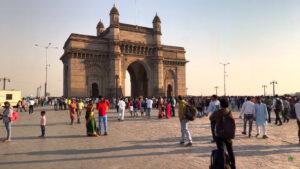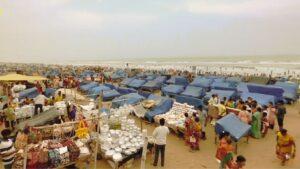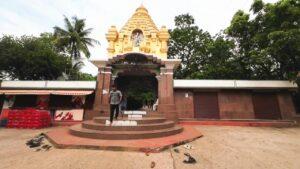Winter transforms West Bengal into a picturesque wonderland, making it an ideal season for exploration. The crisp, cool air and clear skies create a perfect backdrop for sightseeing, with temperatures ranging from mild to chilly, depending on the region. This season not only enhances the natural beauty of the state but also provides a comfortable climate for outdoor activities. From the bustling streets of Kolkata to the serene hills of Darjeeling and the tranquil waters of Mirik Lake, winter in West Bengal offers a variety of unique experiences.
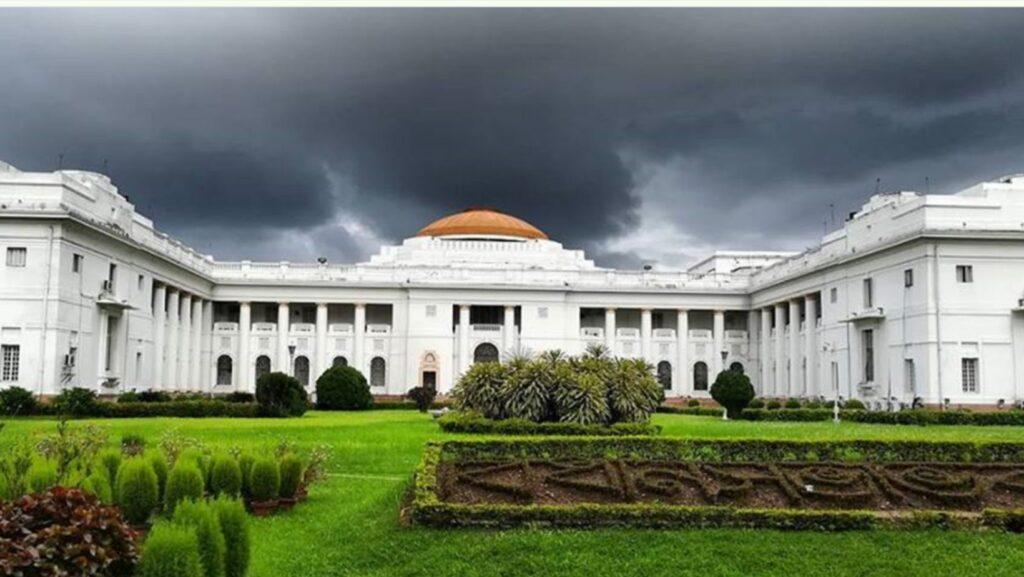
Why West Bengal?
West Bengal is a fascinating destination with a rich tapestry of culture, history, and natural beauty. Here’s why it should be on your travel list:
Diverse Landscapes:
- Himalayan Beauty: The northern region, including Darjeeling and Kalimpong, offers stunning views of the Himalayas. The serene hill stations provide a perfect escape into nature.
- Coastal Charm: The southern part features the Sunderbans, a unique mangrove forest and UNESCO World Heritage site, known for its diverse wildlife including the Bengal tiger.
- Urban Vibes: Kolkata, the capital, is a vibrant metropolis blending colonial history with modern life. Its bustling streets, colonial architecture, and cultural landmarks make it a dynamic city to explore.
Rich Cultural Heritage:
- Historical Significance: West Bengal has a deep historical and cultural legacy. From the ancient ruins of Bengal to colonial-era landmarks, it offers a window into the region’s past.
- Festivals and Arts: The state is renowned for its festivals, including Durga Puja, which is celebrated with grandeur. West Bengal is also known for its contributions to literature, art, and music.
Culinary Delights:
Unique Flavors: West Bengal is famous for its diverse and delectable cuisine. Enjoy dishes like macher jhol (fish curry), shorshe ilish (hilsa fish in mustard sauce), and an array of sweets including rasgulla and sandesh.
You May Read
Cultural Experiences:
- Art and Literature: West Bengal has a rich tradition in literature and arts, with figures like Rabindranath Tagore and Satyajit Ray. Museums, art galleries, and cultural centers showcase the state’s artistic heritage.
- Traditional Crafts: The state is known for its traditional crafts, including terracotta sculptures, handloom textiles, and intricate embroidery.
Natural Wonders:
- Tea Gardens: The lush tea gardens of Darjeeling and Assam offer picturesque landscapes and an opportunity to learn about tea production.
- Wildlife and Nature Reserves: Besides the Sunderbans, places like the Jorpokhri Wildlife Sanctuary and Buxa Tiger Reserve provide opportunities for wildlife enthusiasts.
Historical and Religious Sites:
Temples and Monasteries: West Bengal is home to a variety of temples and monasteries, including the Dakshineswar Kali Temple and the Buddhist monasteries in Darjeeling.
Strategic Location:
Accessibility: West Bengal’s strategic location in eastern India makes it a convenient starting point for exploring nearby regions and countries, including Nepal, Bhutan, and Bangladesh.
Why Visit West Bengal in Winter?
Winter is an exceptional time to visit West Bengal for several reasons:
Pleasant Weather:
- Cool and Comfortable: The winter months (December to February) bring cooler temperatures, making it ideal for sightseeing and outdoor activities. The weather is pleasant, with temperatures ranging from 10°C to 20°C, offering a respite from the intense summer heat and humidity.
- Clear Skies: Winter generally offers clear skies and lower humidity, enhancing visibility and making it perfect for exploring West Bengal’s scenic landscapes.
Festivals and Events:
- Cultural Celebrations: Winter is a festive season in West Bengal. Major festivals like Durga Puja and Kali Puja are celebrated with grandeur, and various local fairs and cultural events take place. This season provides a vibrant cultural experience with traditional music, dance, and cuisine.
- Traditional Events: The winter season often features traditional fairs and local events, offering a chance to experience regional customs and celebrations.
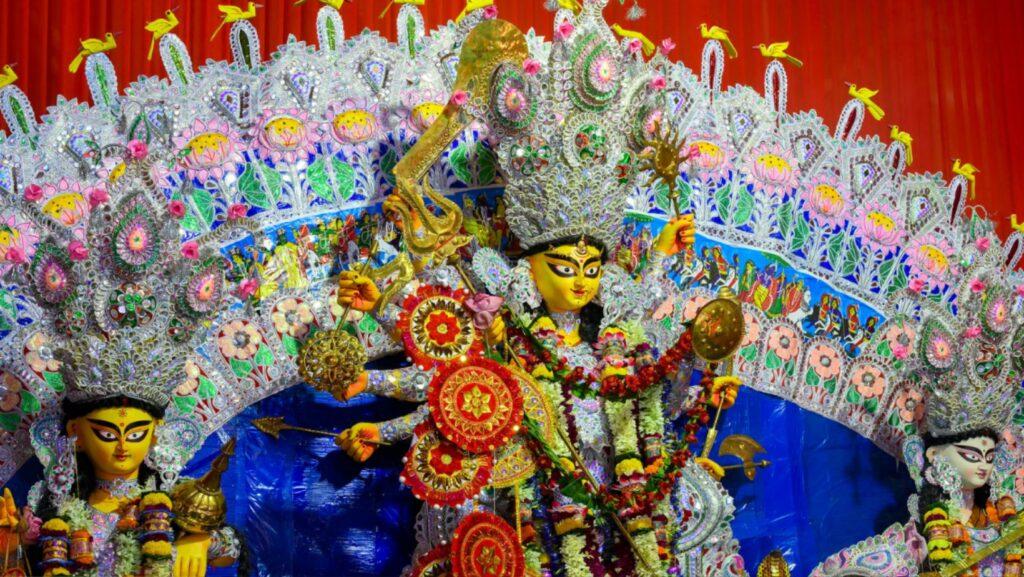
Natural Beauty:
- Hill Stations: Places like Darjeeling, Mirik, and Kalimpong become particularly attractive during winter. The crisp air and clear views make it an ideal time to enjoy the breathtaking Himalayan landscapes, visit tea gardens, and explore local monasteries.
- Sunderbans: The cooler weather makes it more comfortable to explore the Sunderbans National Park, famous for its mangrove forests and wildlife. Winter is an excellent time for wildlife spotting as animals are more active.
Reduced Crowds:
Less Rush: Compared to the peak tourist season in summer, winter sees fewer crowds at popular destinations. This allows for a more relaxed and enjoyable travel experience without the hustle and bustle of peak season tourists.
Culinary Delights:
Seasonal Flavors: Winter is a great time to indulge in West Bengal’s rich culinary traditions. Enjoy seasonal specialties like pithas (rice cakes), luchis (fried bread), and various sweets like rasgulla and sandesh.
Top tourist attractions in West Bengal:
West Bengal, a land of diverse culture, rich history, and breathtaking landscapes, offers an array of tourist attractions that captivate every type of traveler.
1. Kolkata (Calcutta)
The best time to visit Kolkata reveals a city that transforms with the seasons, each offering its own unique charm. Autumn brings a warm glow, with the city alive in festive colors and vibrant celebrations. As winter approaches, Kolkata embraces a cozy atmosphere, perfect for exploring its colonial architecture, bustling markets, and cultural landmarks.
- Victoria Memorial: An iconic monument with splendid architecture and sprawling gardens, commemorating Queen Victoria.
- Howrah Bridge: A landmark cantilever bridge across the Hooghly River, offering stunning views and a glimpse into Kolkata’s daily life.
- Indian Museum: India’s oldest and largest museum, housing extensive collections of art, archaeology, and natural history.
- Marble Palace: A grand mansion with European-style architecture, housing an impressive collection of art and antiques.
- Dakshineswar Kali Temple: A renowned temple dedicated to Goddess Kali, located on the banks of the Hooghly River.
- Kumartuli: A traditional neighborhood famous for its artisans who craft clay idols for festivals.
Darjeeling
- Tiger Hill: Known for its spectacular sunrise views over the Himalayas, including Mount Kanchenjunga.
- Darjeeling Himalayan Railway: A historic toy train ride through scenic landscapes, recognized as a UNESCO World Heritage site.
- Batasia Loop: A railway loop offering panoramic views of Darjeeling and the surrounding hills, with a war memorial.
- Peace Pagoda: A Buddhist stupa that provides a serene environment and panoramic views of the city.
Sunderbans
- Sundarbans National Park: The largest mangrove forest in the world, famous for its unique ecosystem and the Bengal tiger.
- Mangrove Safari: Boat tours through the mangroves offer a chance to see wildlife such as tigers, crocodiles, and a variety of bird species.
Kalimpong
Kalimpong is a precious gem hidden among the green hills of West Bengal. Nature and spirit are at their best in this quiet hill station. Kalimpong is renowned for its Buddhist monasteries and enchanting orchid nurseries.
Read –Best Time to Visit Kalimpong: Distance from Delhi and Kolkata, Accommodation Facility
- Deolo Hill: Offers breathtaking views of the surrounding landscape and is ideal for picnicking and outdoor activities.
- Kalimpong Monastery: A peaceful Tibetan monastery with vibrant prayer flags and serene surroundings.
- Cactus Nursery: A unique nursery with a wide variety of cacti and succulents.
Mirik
- Mirik Lake: A serene lake surrounded by hills and tea gardens, popular for boating and relaxing.
- Buddhist Monastery: A tranquil place offering a glimpse into Buddhist practices and stunning views.
Shantiniketan
- Visva-Bharati University: Founded by Rabindranath Tagore, this institution is known for its distinctive educational approach and beautiful campus.
- Tagore’s Ashram: Visit the residence of Rabindranath Tagore and explore his contributions to art and literature.
Siliguri
- Mahananda Wildlife Sanctuary: A sanctuary rich in biodiversity, including elephants, deer, and various bird species.
- Jorpokhri Wildlife Sanctuary: Known for its picturesque lake and diverse wildlife, including the endangered red panda.
Gangtok
- Enchey Monastery: A prominent Tibetan monastery with vibrant murals and a serene atmosphere.
- MG Road: The main commercial street in Gangtok, lined with shops, restaurants, and local attractions.
- Rumtek Monastery: A significant Buddhist monastery with elaborate architecture and spiritual significance.
Bakkhali
- Bakkhali Beach: A tranquil and relatively untouched beach known for its clean sands and peaceful environment.
Digha
- Digha Beach: A popular beach destination with a long sandy stretch, ideal for relaxation and beach activities.
- Udaipur Beach: A quieter and less crowded beach near Digha, offering a more serene experience.
Raichak
- Raichak Fort: A historical fort with views of the Hooghly River, providing insights into the colonial past of the region.
Sundarbans Village
- Local Culture: Experience traditional village life in the Sundarbans, with opportunities to explore local crafts and cuisine.
What West Bengal is famous for?
Rich Cultural Heritage
- Kolkata (Calcutta): Known as the cultural capital of India, Kolkata is famous for its vibrant arts scene, literature, and festivals. It’s the birthplace of literary giants like Rabindranath Tagore and Satyajit Ray.
- Durga Puja: This major festival, celebrated with grandeur in Kolkata and across the state, showcases elaborate decorations, traditional dances, and cultural performances.
- Traditional Arts and Crafts: West Bengal is known for its traditional arts such as Kantha embroidery, terracotta sculptures, and the art of making Durga idols.
Historic Landmarks
- Victoria Memorial: An iconic white marble building in Kolkata, dedicated to Queen Victoria, and a symbol of colonial architecture.
- Sundarbans National Park: A UNESCO World Heritage site, renowned for its unique mangrove forests and the Bengal tiger.
Literary and Artistic Contributions
- Rabindranath Tagore: The first non-European Nobel laureate in Literature, Tagore’s works and philosophy have made a significant impact globally.
- Satyajit Ray: An acclaimed filmmaker, Ray is known for his influential films and contributions to cinema.
Natural Beauty
- Darjeeling: Famous for its picturesque landscapes, tea gardens, and the Darjeeling Himalayan Railway, a UNESCO World Heritage site.
- Sikkim: Though a separate state, Sikkim is often visited from West Bengal and is known for its stunning Himalayan scenery and Buddhist monasteries.
Culinary Delights
- Bengali Cuisine: West Bengal is famous for its distinct and flavorful cuisine, including dishes like macher jhol (fish curry), shorshe ilish (hilsa fish in mustard sauce), and a variety of sweets like rasgulla and sandesh.
- Street Food: Kolkata’s street food scene is renowned for items like puchka (pani puri), kathi rolls, and chaat.
Festivals and Celebrations
- Durga Puja: The most famous festival in West Bengal, marked by intricate pandal decorations, vibrant processions, and cultural performances.
- Kali Puja: Celebrated in Kolkata and other parts of the state, this festival honors the goddess Kali with elaborate rituals and celebrations.
Diverse Geography
- Sundarbans: The largest mangrove forest in the world, known for its unique ecosystem and wildlife, including the Bengal tiger.
- Rivers: The Hooghly, Ganges, and Brahmaputra rivers are crucial to the state’s geography and cultural life.
Educational and Research Institutions
- Visva-Bharati University: Founded by Rabindranath Tagore in Shantiniketan, it is known for its unique educational philosophy and contributions to art and culture.
Historical Sites
- Kalimpong and Darjeeling: Known for their colonial architecture and historical significance, these hill stations offer a glimpse into the British era and the cultural exchange with Tibet.
Handicrafts and Textiles
- Sarees: West Bengal is famous for its handwoven sarees, including the traditional Banarasi and Baluchari sarees.
- Terracotta Art: The town of Bishnupur is known for its terracotta temples and crafts.
Day 1: Exploring the Beauty of West Bengal
Morning: Kolkata
- Victoria Memorial: Start your day with a visit to this grand monument, a tribute to Queen Victoria, surrounded by lush gardens and offering insights into colonial architecture and history.
- Howrah Bridge: Marvel at this iconic bridge, an engineering marvel and a vital transport link over the Hooghly River, while soaking in the vibrant atmosphere of Kolkata.
- New Market: Explore this bustling market area for a taste of local shopping and street food. It’s a great place to experience the lively culture of Kolkata.
- Indian Museum: Discover one of the oldest and largest museums in India, showcasing diverse collections ranging from ancient artifacts to natural history.
- Marble Palace: Visit this stunning 19th-century mansion known for its exquisite marble architecture and art collection.
- Breakfast Recommendations:
- Local Cafes or Restaurants: Enjoy a traditional Bengali breakfast at popular spots like Kewpie’s, Bar-B-Q, or Bhojohori Manna. Sample dishes such as kachori, aloo-torkari, and various sweets.
Afternoon: Sunderbans National Park
- Highlights:
- Boat Tour: Head to Sunderbans National Park, a UNESCO World Heritage Site, for an exhilarating boat tour through its dense mangrove forests. Experience the unique ecosystem and spot diverse wildlife.
- Wildlife Spotting: Keep an eye out for the elusive Bengal tiger, along with various species of birds, reptiles, and other wildlife that inhabit the park.
- Lunch Recommendations:
- Local Seafood or Bengali Cuisine: Enjoy a fresh seafood lunch at local eateries or nearby lodges. Opt for traditional Bengali dishes like hilsa fish curry or prawn malai curry.
Evening: Return to Kolkata
- Prinsep Ghat: Return to Kolkata and unwind at Prinsep Ghat, a scenic spot by the Hooghly River. The beautifully restored ghat offers a peaceful place to relax and enjoy the sunset views.
- Leisurely Dinner: End your day with a leisurely dinner at a local restaurant or street food spot. Try popular local dishes like roll, biryani, or sweets such as rasgulla and sandesh. Consider dining at Oh! Calcutta or 6 Ballygunge Place for an authentic Bengali experience.
Day 2: Discovering West Bengal’s Natural Beauty
Morning: Darjeeling
- Tiger Hill: Start your day early with a visit to Tiger Hill, famous for its stunning sunrise views over the Kanchenjunga, the world’s third-highest peak. The breathtaking panorama of the Himalayan range is a must-see.
- Batasia Loop: Explore the Batasia Loop, a remarkable engineering feat of the Darjeeling Himalayan Railway. The loop offers panoramic views of the surrounding hills and is a great spot for photos.
- Darjeeling Himalayan Railway: Experience a ride on the historic Darjeeling Himalayan Railway, a UNESCO World Heritage Site known for its scenic journey through the hills.
- Breakfast Recommendations:
- Local Cafes: Enjoy a hearty breakfast at local cafes in Darjeeling. Try traditional Tibetan or Nepali dishes such as momos (dumplings) and thukpa (noodle soup) at places like Kunga Restaurant or Glenary’s.
Afternoon: Mirik
- Mirik Lake: Head to Mirik, a serene hill station known for its beautiful Mirik Lake. Relax by the lake and enjoy a peaceful boat ride while taking in the picturesque surroundings.
- Buddhist Monastery: Visit a nearby Buddhist monastery to experience the tranquil atmosphere and learn about local spiritual practices.
- Tea Gardens: Explore the lush tea gardens around Mirik, where you can see tea leaves being cultivated and enjoy fresh tea tastings.
- Lunch Recommendations:
- Local Restaurant: Enjoy a leisurely lunch at a local restaurant with views of the lake. Sample regional dishes and enjoy the serene ambiance of Mirik.
Evening: Return to Kolkata
- Final Dinner in Kolkata: Return to Kolkata for a final evening of exploration. Savor a delicious dinner at a renowned restaurant, or visit a street food market to enjoy a variety of local delicacies.
- Souvenir Shopping (Optional): If time permits, explore local markets such as New Market or College Street for souvenirs to remember your trip. Pick up traditional Bengali handicrafts, sweets, and other memorabilia.
Travel Tips
Packing Essentials:
- Warm Clothing: Pack layers of warm clothing, including sweaters, jackets, and thermal wear. Winter temperatures in West Bengal, especially in Darjeeling and Mirik, can be quite chilly.
- Comfortable Footwear: Bring comfortable shoes for walking and exploring, as you’ll be on your feet a lot. Waterproof footwear is also useful for rainy or misty conditions.
- Sunglasses and Sunscreen: Even in winter, the sun can be strong, especially at higher altitudes. Protect your eyes and skin with sunglasses and sunscreen.
- Camera and Binoculars: Don’t forget your camera to capture the stunning landscapes and wildlife, and binoculars for better views of the distant peaks and bird watching.
- Medication and Personal Items: Carry any personal medications you might need, and pack a small first aid kit for emergencies.
Transportation Recommendations:
- Between Kolkata and Darjeeling:
- By Air: The fastest way is to fly from Kolkata to Bagdogra Airport, which is the nearest airport to Darjeeling. From Bagdogra, you can take a taxi or a shared cab to Darjeeling (approximately 3-4 hours).
- By Train: Alternatively, you can take a train from Kolkata to New Jalpaiguri and then transfer to a taxi or shared cab to Darjeeling.
- Within Darjeeling and Mirik:
- Local Transportation: In Darjeeling, you can use local taxis or the famous toy train for short distances. For traveling to Mirik, consider hiring a private taxi for a more comfortable and direct journey.
- Public Transport: Buses and shared cabs are also available for intercity travel between Darjeeling and Mirik.
Accommodation Suggestions:
- In Kolkata:
- Luxury: The Oberoi Grand or ITC Sonar offer high-end accommodations with excellent amenities.
- Mid-Range: Hotel Hindustan International and The Peerless Inn provide comfortable stays with good service.
- Budget: Hotel Casa Fortuna and New Market Hotel are budget-friendly options in central locations.
- In Darjeeling:
- Luxury: The Glenburn Tea Estate and Hotel Mount Victoria offer elegant accommodations with stunning views.
- Mid-Range: Hotel Sinclairs Darjeeling and Dekeling Hotel provide good comfort and services.
- Budget: The Lunar and Kolkata’s Hotels offer more affordable stays with basic amenities.
- In Mirik:
- Luxury: Jagjeet’s Mirik Retreat and Hotel Sunrise offer serene accommodations with scenic views.
- Mid-Range: Hotel Nirvana and Hotel Tenzing are good choices for a comfortable stay.
- Budget: Hotel Hilltop and Hotel Samten provide basic but pleasant accommodations at a lower cost.
Ready to experience the best of West Bengal in just two days? Use this guide to plan your winter getaway and immerse yourself in the unique charm of this region. The bustling streets of Kolkata or the tranquil hills of Darjeeling and Mirik, West Bengal promises an unforgettable travel experience. Start planning your trip today and enjoy a winter adventure filled with cultural richness and natural beauty!
